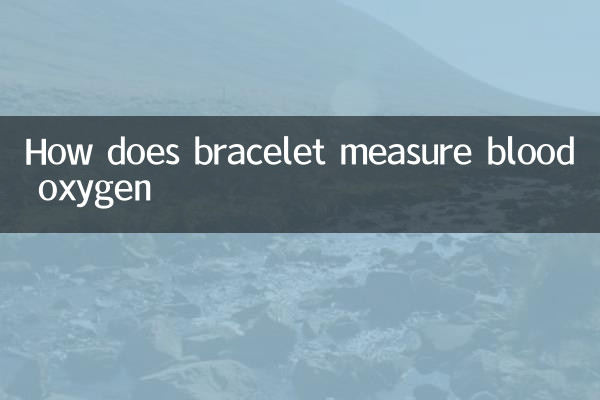How does bracelet measure blood oxygen
With the popularity of health monitoring equipment, smart bracelets have become an important tool for many people's daily health management. Among them, blood oxygen monitoring function has attracted much attention, especially during the COVID-19 pandemic, blood oxygen saturation (SpO₂) has become an important indicator for evaluating respiratory health. So, how does a bracelet achieve blood oxygen monitoring? This article will combine recent hot topics and structured data to analyze them in detail for you.
1. The principle of blood oxygen monitoring

Blood oxygen monitoring of bracelets is mainly based onPhotoelectric plethysmograph (PPG). The principle is to emit light at a specific wavelength (usually red and infrared) through the sensor, illuminate the capillaries under the skin, and then detect reflected or transmitted light signals. The absorption rate of hemoglobin to light varies depending on the oxygen content. By analyzing these changes by algorithms, the blood oxygen saturation can be calculated.
| Technical name | principle | Applicable scenarios |
|---|---|---|
| PPG technology | Detection of blood oxygen changes through light reflection | Daily continuous monitoring |
| Medical grade blood oxygen meter | Transmission measurement, higher accuracy | Medical diagnosis |
2. Advantages and disadvantages of bracelet blood oxygen monitoring
Compared with professional medical equipment, the blood oxygen monitoring function of bracelets has the advantages of portability and continuity, but it also has certain limitations. The following is a summary of recent user feedback:
| advantage | shortcoming |
|---|---|
| 24-hour continuous monitoring | Lower accuracy than medical equipment |
| Non-invasive and convenient | Affected by exercise and skin color |
| Data visualization | Calibration is required regularly |
3. Recent hot topics and user concerns
According to the network-wide data analysis in the past 10 days, the following are hot topics related to bracelet blood oxygen monitoring:
| Ranking | topic | Discussion hot topic |
|---|---|---|
| 1 | Controversy over the accuracy of blood oxygen monitoring of bracelets | High fever |
| 2 | Necessity of blood oxygen monitoring during the rehabilitation period of COVID-19 | Medium-high |
| 3 | Sleep apnea screening function | middle |
4. How to improve measurement accuracy?
In response to the accuracy issues that users are generally concerned about, experts recommend:
1. Make sure the bracelet fits closely with the skin when wearing it
2. Stay still during measurement
3. Avoid using it in low temperature environments
4. Regularly compare and calibrate with medical equipment
5. Future development trends
According to industry reports, shipments of wearable devices equipped with blood oxygen monitoring are expected to increase by 35% in 2023. At the technical level, the combination of multi-wavelength sensors and AI algorithms will become the key to improving accuracy. In addition, linkage with telemedicine is also an important development direction.
In summary, although the blood oxygen monitoring function of the bracelet cannot completely replace professional medical equipment, it is of great value as a health warning tool. With the advancement of technology, its application scenarios will be further expanded.

check the details

check the details